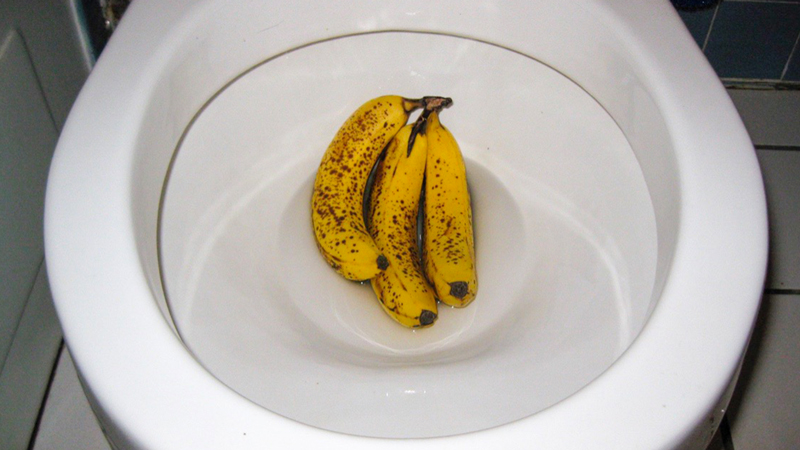The writer is making several good pointers relating to Think Twice Before Flushing Food Down Your Toilet in general in the article in the next paragraphs.

Introduction
Many people are often confronted with the predicament of what to do with food waste, especially when it pertains to leftovers or scraps. One typical inquiry that emerges is whether it's fine to purge food down the commode. In this short article, we'll delve into the reasons individuals may consider purging food, the effects of doing so, and alternative approaches for appropriate disposal.
Reasons people might consider flushing food
Lack of recognition
Some people may not understand the possible damage brought on by purging food down the bathroom. They might incorrectly think that it's a safe technique.
Benefit
Purging food down the toilet might seem like a fast and very easy service to dealing with undesirable scraps, specifically when there's no close-by garbage can available.
Idleness
In some cases, individuals might simply pick to flush food out of sheer negligence, without considering the effects of their activities.
Repercussions of flushing food down the toilet
Ecological influence
Food waste that ends up in rivers can add to contamination and injury water environments. Additionally, the water used to purge food can stress water resources.
Pipes issues
Flushing food can result in blocked pipes and drains, triggering pricey plumbing repairs and aggravations.
Kinds of food that must not be flushed
Coarse foods
Foods with fibrous structures such as celery or corn husks can obtain tangled in pipelines and cause clogs.
Starchy foods
Starchy foods like pasta and rice can soak up water and swell, bring about blockages in pipelines.
Oils and fats
Greasy foods like bacon or cooking oils ought to never ever be purged down the bathroom as they can strengthen and trigger obstructions.
Correct disposal methods for food waste
Using a waste disposal unit
For homes outfitted with waste disposal unit, food scraps can be ground up and flushed via the plumbing system. Nonetheless, not all foods are suitable for disposal in this way.
Recycling
Certain food packaging products can be recycled, lowering waste and decreasing environmental influence.
Composting
Composting is an environmentally friendly method to deal with food waste. Organic materials can be composted and utilized to enhance dirt for gardening.
The relevance of appropriate waste monitoring
Minimizing environmental injury
Appropriate waste monitoring practices, such as composting and recycling, aid minimize air pollution and maintain natural resources for future generations.
Protecting plumbing systems
By staying clear of the method of flushing food down the bathroom, homeowners can stop pricey pipes fixings and maintain the stability of their plumbing systems.
Conclusion
To conclude, while it may be tempting to flush food down the commode for ease, it is very important to recognize the possible effects of this action. By taking on proper waste administration methods and disposing of food waste sensibly, people can add to much healthier plumbing systems and a cleaner environment for all.
FLUSH FOOD DOWN THE TOILET?
FLUSHING FOOD CAN CAUSE BLOCKED DRAINS IN YOUR HOME
All of the plumbing fixtures in your home are connected to the same sewer pipe outside of your home. This outdoor sewer pipe is responsible for transporting all the wastewater from your home to the Council sewer mains. Even small pieces of food that go down the kitchen sink can cause problems for your sewer. It should therefore be obvious that flushing larger bits of food, such as meat, risks a clog in either the toilet itself or the sewer pipes. Flushing greasy food is even more problematic because oil coagulates when it cools, coating the interior lining of your pipes.
THE TOILET IS NOT A BIN
Food isn’t the only thing that people shouldn’t be flushing down the toilet. People use the toilet to dispose of all kinds of things such as tampons, makeup wipes, dental floss, kitty litter and even underwear. Water goes to great lengths to educate residents about the high costs and stress placed on wastewater treatment systems simply from people flushing the wrong stuff down the toilet. It costs taxpayers millions of dollars each year, and homeowners thousands in blocked drain repairs.
FLUSHING FOOD IS A WASTE OF WATER
Flushing food is a waste of our most precious resource - water. In June this year Level 1 water restrictions were introduced to protect water supply from drought conditions. Much of New South Wales continues to be affected by prolonged drought with recent figures revealing up to 97 per cent of the state remains in drought. Depending on whether you have a single or dual flush toilet, every single flush uses between five and 11 litres of water. In the current climate this is a huge amount of water to be wasting on flushing food that should be placed in the bin (or better yet, the compost).
https://www.jabplumbingsolutions.com.au/blog/can-you-flush-food-down-the-toilet

Do you like reading up on Is it safe to flush food (especially rice) down the toilet?? Post a remark below. We would be pleased to find out your suggestions about this review. In hopes that you visit us again soon. Sharing is nice. Helping others is fun. I enjoy your readership.
Check It Out